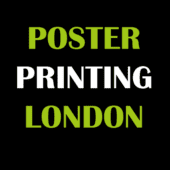Creating Stunning Posters Using PowerPoint: A Step-by-Step Guide
When it comes to designing eye-catching posters, many people overlook PowerPoint as a viable tool. However, with its versatile features and user-friendly interface, PowerPoint can be a powerful tool for creating visually appealing posters for various purposes, including presentations, events, promotions, and more. In this guide, we’ll walk you through the step-by-step process of designing a poster in PowerPoint, enabling you to unleash your creativity and produce professional-quality designs with ease.
Step 1: Setting Up Your Canvas
- Open PowerPoint: Launch PowerPoint on your computer and create a new blank presentation.
- Choose Slide Size: Go to the “Design” tab and select “Slide Size” from the toolbar. Choose the desired size for your poster, such as “Custom Slide Size,” and enter the dimensions you prefer. Common poster sizes include A4, A3, or custom sizes tailored to your specific needs.
Step 2: Designing Your Poster
- Select a Background: Navigate to the “Design” tab and choose a background style for your poster. You can opt for solid colors, gradients, patterns, or even insert an image as the background.
- Add Text: Click on the “Text Box” option in the toolbar and draw a text box on the canvas. Enter your desired text, adjusting the font style, size, color, and alignment as needed. Consider using different font styles for headings, subheadings, and body text to create visual hierarchy.
- Incorporate Images: To insert images into your poster, go to the “Insert” tab and select “Pictures” or “Online Pictures” to import images from your computer or the web. Resize and position the images on the canvas to complement your text and overall design.
- Include Graphics and Shapes: Enhance your poster design by adding graphics, icons, and shapes from the “Insert” tab. Use shapes to create borders, dividers, or decorative elements that accentuate your content.
- Experiment with Colors and Effects: Explore the various formatting options available in PowerPoint to customize the appearance of your text, images, and shapes. Experiment with colors, gradients, shadows, and other effects to add visual interest to your poster design.
Step 3: Finalizing Your Poster
- Review and Edit: Take a step back to review your poster design and make any necessary adjustments. Pay attention to spacing, alignment, and overall aesthetics to ensure a polished final product.
- Save Your Poster: Once you’re satisfied with your design, save your poster as a PowerPoint file for future editing or export it as an image file (e.g., JPEG or PNG) for printing or online sharing.
- Print or Share Your Poster: Print your poster directly from PowerPoint or save it as a PDF file for professional printing at a print shop. You can also share your poster electronically via email, social media, or presentation platforms.
Conclusion
Designing posters in PowerPoint offers a convenient and accessible solution for creating visually engaging content for a wide range of purposes. By following the step-by-step guide outlined above, you can harness the power of PowerPoint to design stunning posters that captivate your audience and effectively communicate your message.
From setting up your canvas and designing your poster to finalizing and sharing your creation, PowerPoint provides the tools and flexibility you need to bring your ideas to life. So whether you’re promoting an event, presenting research findings, or showcasing your creative work, consider leveraging PowerPoint’s features to design professional-quality posters that leave a lasting impression. With a bit of creativity and experimentation, you’ll be amazed at what you can accomplish with PowerPoint as your design tool of choice.
